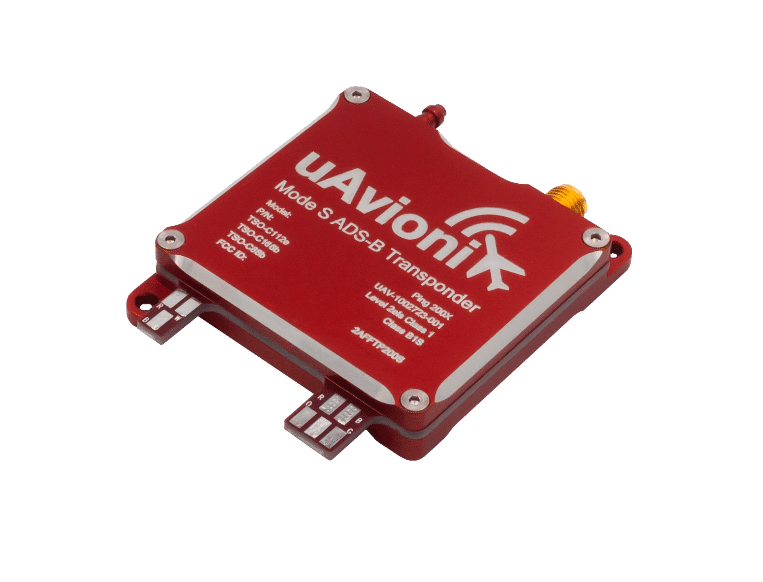uAvionix, designer and manufacturer of communications, navigation, and surveillance (CNS) equipment for unmanned and manned aircraft, has unveiled a new line of certified avionics designed to enable Unmanned Aircraft Systems (UAS) type certifications and Beyond Visual Line of Sight (BVLOS) mission capabilities.
The ping200X Mode S Automatic Dependent Surveillance – Broadcast (ADS-B) transponder and the truFYX Satellite Based Augmentation System (SBAS) Global Positioning System (GPS) navigation source are the newest entries to the uAvionix product line.

Ping200X is designed from the ground up for Technical Standard Order (TSO) certification to Design Assurance Level C (DAL-C) for software and hardware under RTCA DO-178C and DO-254. Weighing only 50 grams, Ping200X is a 250W Class 1 Level 2els, full power Mode S transponder being certified to TSO-C112e (Mode S), TSO-C166b (ADS-B OUT), and TSO-C88b for the internal altitude encoder. Certification is expected to be complete by July 2019, according to company officials.

truFYX will be the world’s first SBAS GPS position source certified under TSO-C145e as a Class Beta 1 device, company officials note.
uAvionix previously certified the truFYX position source as a integrated component of the skyBeacon ADS-B Out solution for General Aviation.

The truFYX is designed to pair with ADS-B Out solutions for U.S. and worldwide ADS-B compliance, as well as approved for use as a certified position source for an integrated navigation system (autopilot) for oceanic and domestic en route, terminal approach (LNAV), and departure operations.
The truFYX TSO certification package has been filed with the FAA Aircraft Certification Office (ACO) and approval is expected within the month.
“The UAS market has evolved to the point where UAS Original Equipment Manufacturers (OEMs) are now executing serious efforts to achieve aircraft type certifications. Leveraging certified equipment not only for ADS-B, but also as the primary position source for BVLOS autopilot navigation helps our customers achieve those goals,” said uAvionix President Christian Ramsey. “Until now, certified solutions meeting the Size, Weight, and Power (SWaP) profile of unmanned systems simply didn’t exist.”

It’s pretty clear the drone industry wants into the National Airspace System by leveraging ADSB. The FAA thinks ADSB is the cat’s meow. But the reality is, the number of mis-configured and malfunctioning systems out there is a nightmare, and ground stations providing ADS-B traffic miss or drop a lot of the mode-C traffic. My best guess is that >25% of the traffic never shows up on the screen. Not to mention the numerous non-electric aircraft still actively flying. ADSB isn’t going to make it as a replacement for see and avoid. I’ve been flying with ADSB for a number of years now as I was an early adopter, and have had the pleasure of troubleshooting and diagnosing a number of failures in the early equipment. But the more I learned about the ADSB system, and the more I flew with it, the more I have come to realize just how poorly the system performs. However, it does work better in congested airspace where the mode-C traffic is on radar more consistently and you are always in close proximity to numerous ADSB ground stations.
uAvionics is doing good work. And I’m glad to see them in the GA business as well as providing equipment for drones . But just putting ADS-B on board a drone isn’t going to cut it to fit into the National Air Space system.